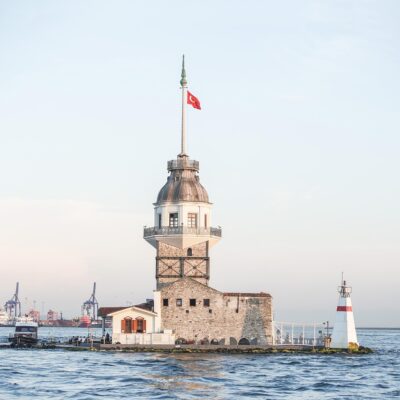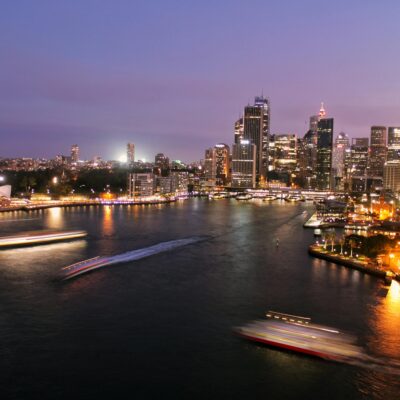Germany’s castles, forests and medieval towns have inspired countless fairy tales, from the Brothers Grimm to Disney. But beyond Neuschwanstein and the Black Forest lies a treasure trove of hidden gems in Germany that most travelers overlook. These offbeat destinations are rich with charm, history and a dreamlike atmosphere that feels pulled from the pages of a storybook.
Whether you’re chasing cobblestone lanes, misty mountains, or villages where half-timbered houses lean with age, these fairytale places in Germany are your ticket to stepping back in time.
1. Quedlinburg
With over 1,300 half-timbered houses and winding alleys, Quedlinburg is one of the best-preserved medieval towns in Europe. It’s a UNESCO World Heritage Site, but still manages to fly under the radar of most tourists. The town sits at the edge of the Harz Mountains and offers a peaceful, magical vibe that’s hard to find in bigger cities. Wandering its cobbled streets feels like walking through a Brothers Grimm fairytale. It’s picturesque in every season, especially when dusted with snow.
🧡 Don’t miss: Climbing to the castle hill (Schlossberg) for panoramic views over rooftops that look like gingerbread houses.
2. Monschau
Nestled near the Belgian border in the Eifel region, Monschau is a picture-perfect town of slate-roofed houses, flower boxes and a peaceful river that winds through the center. Despite its storybook looks, it’s remarkably non-touristy compared to Germany’s more famous old towns. The town is surrounded by hiking trails, dense forests and rolling hills, making it perfect for a scenic escape. It’s especially magical during winter, when its Christmas market transforms the village into a real-life snow globe.
🧡 Don’t miss: Walking along the Rur River promenade with a hot chocolate and peeking into traditional craft shops.
3. Rothenburg ob der Tauber
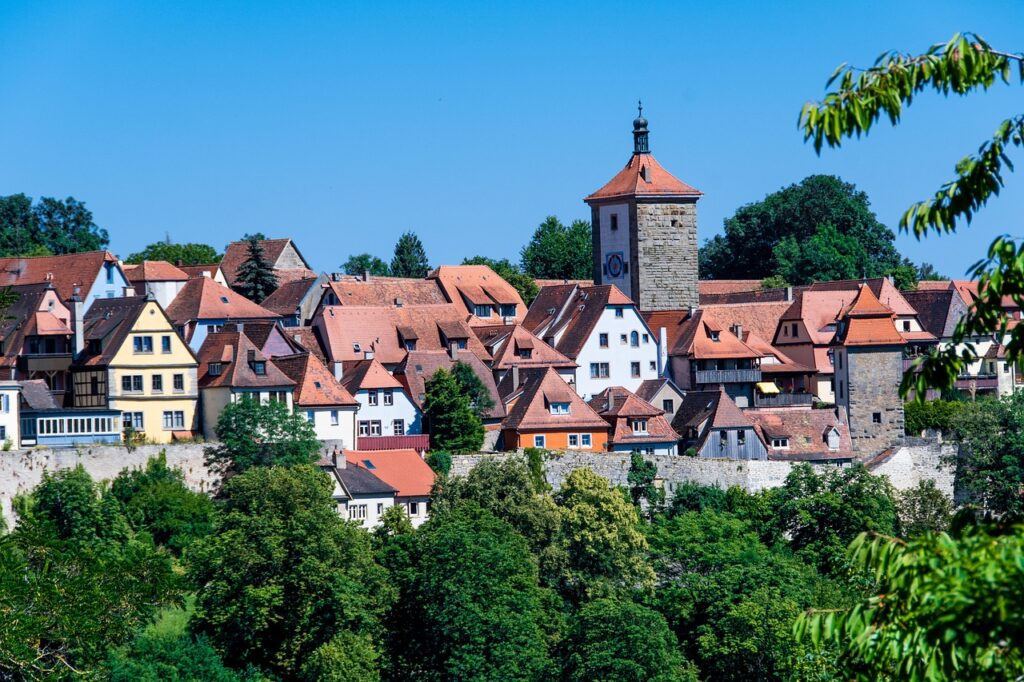
Rothenburg is more famous than others on this list, but it still qualifies as a hidden gem if you visit outside the peak summer season. Its medieval walls, clock towers and candy-colored houses make it one of the most fairytale-like places in Germany. It was even the inspiration for scenes in Disney’s Pinocchio. While tour groups flock to certain parts, there are many quiet alleys, secret gardens and charming corners to explore at your own pace.
🧡 Don’t miss: Walking the full length of the medieval town walls during golden hour for dreamy photos without crowds.
4. Meersburg
Perched above the glistening waters of Lake Constance, Meersburg is a lesser-known gem where vineyards meet castles. Its name means “Castle by the Lake,” and the town delivers with two- the Old Castle (Alte Burg) and the New Castle (Neues Schloss). With pastel buildings, cobblestone lanes and panoramic views of the lake and Alps, it feels like a watercolor painting comes to life. It’s also part of one of Germany’s lesser-known wine regions.
🧡 Don’t miss: Enjoying a lakeside wine tasting with views of the sunset over the water and Swiss Alps.
5. Mittenwald
Tucked between rugged Alpine peaks, Mittenwald is known for its vividly painted houses, violin-making heritage and serene pace of life. Murals known as Lüftlmalerei adorn many of the buildings, depicting saints, shepherds and traditional Bavarian scenes. The town is quieter than nearby Garmisch-Partenkirchen, making it a true off the beaten path Germany experience. In every direction, you’re surrounded by trails, waterfalls and postcard views.
🧡 Don’t miss: Taking the Kranzberg chairlift for sweeping views and a peaceful alpine hike above the village.
6. Schiltach
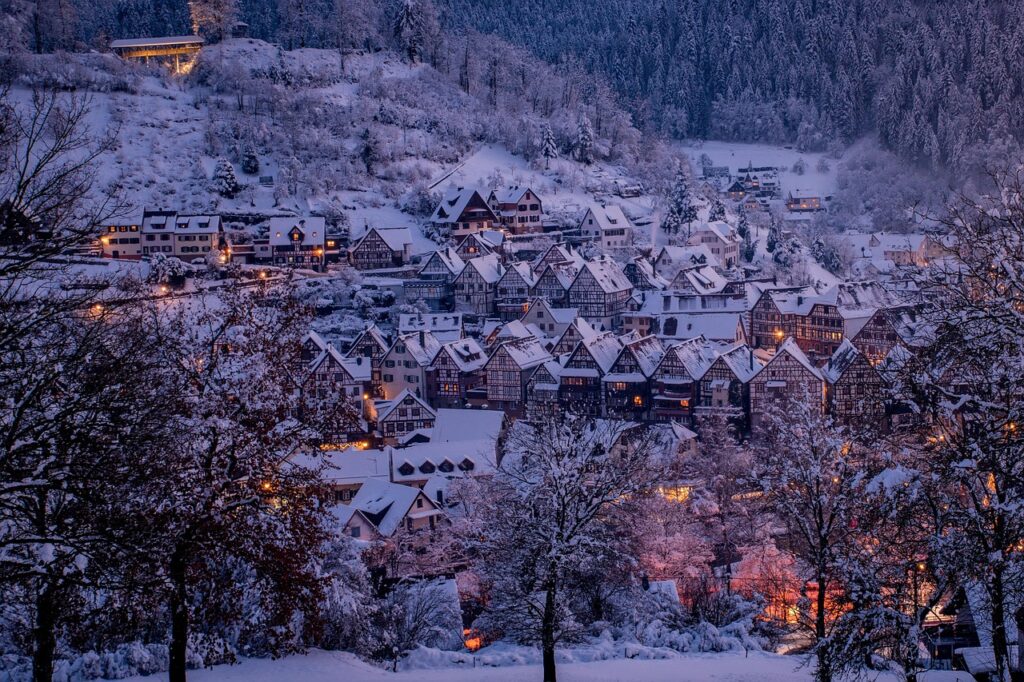
Located deep in the Black Forest, Schiltach is a timber-framed masterpiece that somehow escapes the tourist spotlight. The town sits at the confluence of two rivers and is filled with charming squares, steep lanes and forested hills. Unlike more commercialized Black Forest towns, Schiltach remains beautifully authentic and peaceful. It’s ideal for those who want the storybook village experience without the souvenir shops.
🧡 Don’t miss: Visiting the Pharmacy Museum and then hiking into the nearby woods for fairytale forest vibes.
7. Bamberg
Often overshadowed by cities like Heidelberg or Nuremberg, Bamberg is an enchanting university town that blends Gothic, Renaissance and Baroque architecture. Its UNESCO-listed old town includes a town hall built in the middle of a river, connected by two bridges. The whole place oozes romanticism and beer lovers will also adore its tradition of smoky “Rauchbier.” Despite its beauty, it’s still far less crowded than more touristy destinations.
🧡 Don’t miss: Exploring “Little Venice,” a canal-side row of fishermen’s houses that looks straight out of a medieval painting.
8. Blaubeuren
Located in the Swabian Jura region, Blaubeuren is famous for the Blautopf, a mystical spring of intense turquoise blue that has inspired countless legends. The old town itself is filled with half-timbered houses, a medieval monastery and quiet charm. It’s an easy day trip from Ulm but remains remarkably under-visited. The surrounding karst landscape and caves only add to the storybook vibe.
🧡 Don’t miss: Standing at the edge of the Blautopf and watching the color shift with the light, it’s hypnotic.
9. Goslar
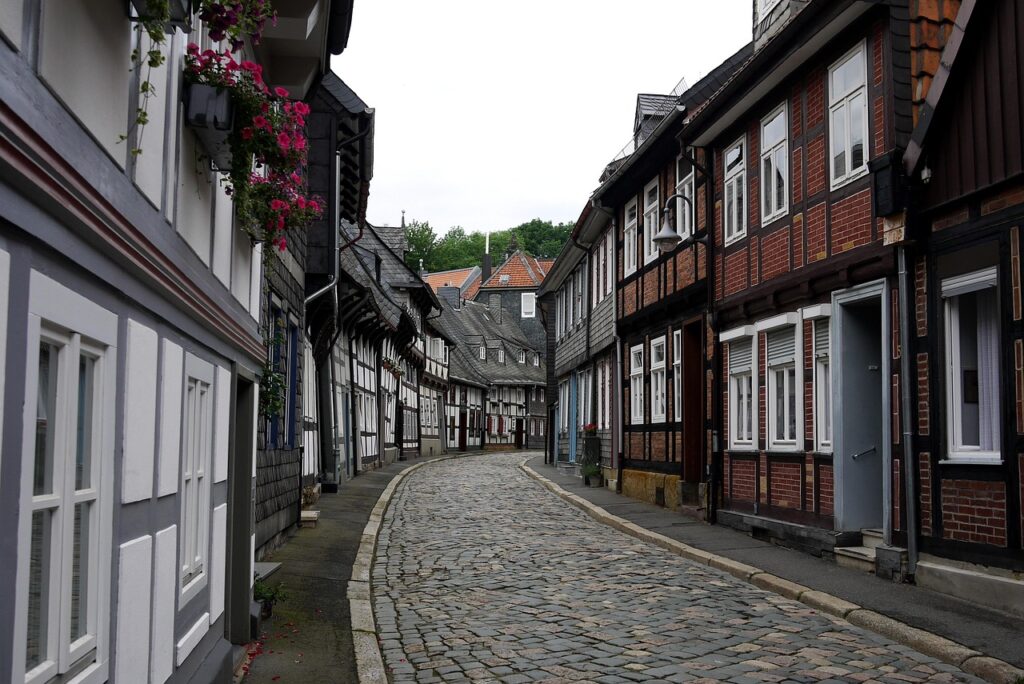
Goslar is a historic town with over 1,500 half-timbered houses and a legacy dating back to the Holy Roman Empire. Once a mining hub, today it’s a quiet, charming escape that feels untouched by time. It sits near national parks and hiking trails, making it a great base for outdoor lovers who still want medieval magic. Despite its UNESCO status, it rarely gets crowded, especially in the cooler months.
🧡 Don’t miss: Visiting the Imperial Palace and wandering through the market square with its chiming glockenspiel.
10. Tüchersfeld
Tüchersfeld is like something out of a fantasy novel, timber-framed houses built into bizarre limestone rock formations. It’s located in Franconian Switzerland, a little-known region of northern Bavaria filled with forest trails, cliffs and castle ruins. The village itself is tiny but unforgettable, especially when shrouded in mist. It’s ideal for photographers, hikers and those chasing the strange and magical.
🧡 Don’t miss: Hiking up to one of the surrounding rock spires to look back over the surreal landscape below.
Tips for Visiting Germany’s Fairytale Hidden Gems
1. Travel by train or car. Germany’s rail network is excellent, but a car will help you reach the most remote villages and scenic spots.
2. Avoid peak months. Visit in spring (May – June) or early fall (September – October) for the best weather and fewer tourists.
3. Explore beyond Bavaria. While Bavaria is rich in storybook beauty, regions like Saxony, Baden-Württemberg and Thuringia are equally magical and less explored.
4. Stay in guesthouses. Traditional German Gasthäuser offers warm hospitality, great food and a local experience you won’t find in chain hotels.
5. Walk, wander and slow down. These places are meant to be savored, so skip the itinerary and let yourself get lost in the magic.
Final Thoughts
If you’ve dreamed of stepping into a fairytale, these hidden gems in Germany will make that dream real. From misty mountains and magical springs to medieval lanes and painted houses, each destination offers a peaceful, enchanting escape from the modern world.
The best part? Most of them are still waiting to be discovered.










